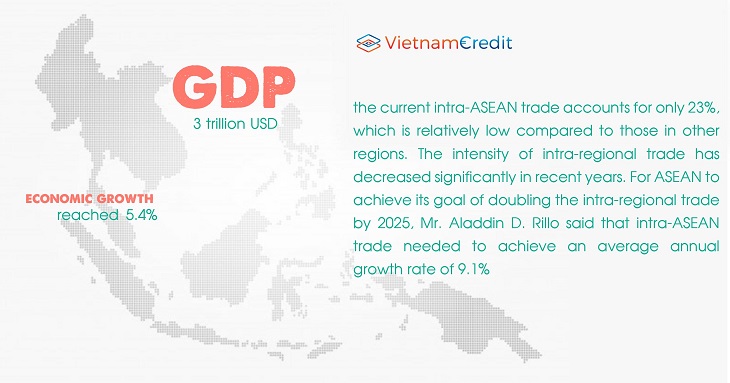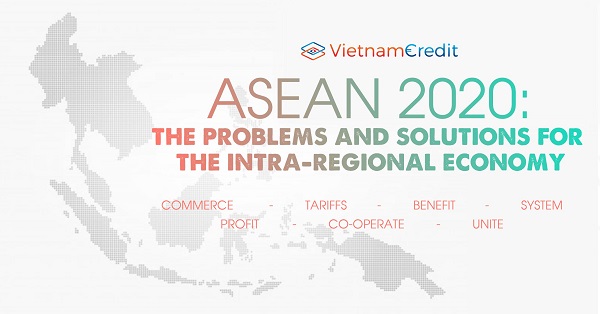ASEAN is also the fourth largest trading economy in the world in terms of trade in goods with a total value of more than 700 billion USD.
"Promoting intra-regional trade and investment for a cohesive and proactive ASEAN" is one of the topics discussed by many ASEAN officials, researchers, and policymakers to jointly find out what difficulties and challenges of strengthening intra-ASEAN economic promotion there are, thus coming up with solutions for these issues.
The highly dynamic economy with a low linkage
Commenting on this issue, Mr. Aladdin D. Rillo, Deputy Secretary-General of ASEAN in charge of the ASEAN Economic Community (ASEAN Secretariat) said that ASEAN is one of the most dynamic regions in the world. It is the world's fifth-largest economy with a gross domestic product (GDP) in 2018 that reached about 3 trillion USD. Its economic growth has reached 5.4%, about 4% higher than the global average.
In trade, ASEAN is also the fourth largest trading economy in the world in terms of trade in goods with a total value of more than 700 billion USD. Regarding foreign direct investment (FDI), the FDI growth in ASEAN is about 4.4%, much higher than those in other developing economies, making ASEAN the third largest FDI receiving economy in the world.
However, according to Mr. Aladdin D. Rillo, the current intra-ASEAN trade accounts for only 23%, which is relatively low compared to those in other regions. The intensity of intra-regional trade has decreased significantly in recent years. For ASEAN to achieve its goal of doubling the intra-regional trade by 2025, Mr. Aladdin D. Rillo said that intra-ASEAN trade needed to achieve an average annual growth rate of 9.1%.
According to Saysana Sayakone, Laos' senior ASEAN economic official, the potential of intra-ASEAN cooperation is huge. The region has made important initiatives and commitments to promote this field, such as the ASEAN Free Trade Area in 1992 with commitments to foster tariff and institutional barriers.
Currently, there is almost no tariff among ASEAN countries, and investment and services are paid special attention. Currently, ASEAN is also moving towards multilateral trade agreements such as the Regional Comprehensive Economic Partnership (RCEP) or economic agreements with ASEAN+1 partners. ASEAN's participation in global and regional value chains is about 60 - 61% and could improve further in the coming time.

Internal barriers and challenges
Currently, in the context of globalization, the strong development of digital technology, the increasing trend of protectionism, and anti-multilateralism, experts have pointed out the barriers and factors which could directly affect the intra-ASEAN trade, in which the non-tariff barrier is paid special attention to.
Saysana Sayakone said that the intra-regional trade could be improved by reducing policy barriers and non-tariff measures. At present, there are two contradictory trends in ASEAN, whereby tariff measures gradually decrease whereas non-tariff measures continue to increase to protect domestic production. There have been about 9,845 non-tariff measures applied by ASEAN and this number is likely to increase. The added values and commercial services being much lower than those of the world is also a big challenge.
According to Mr. Vo Chi Thanh, Chairman of the Vietnam National Committee for Pacific Economic Cooperation (VNCPEC), ASEAN countries are now making every effort to overcome these difficulties through promoting ASEAN Single Window mechanism or RCEP.
Commenting on the ASEAN economy from the perspective of European Union (EU) economists, Chris Humphrey, Executive Director of the EU-ASEAN Business Council said that without strong and resolute measures, it is difficult for ASEAN to achieve its goal of doubling the intra-regional trade by 2025. Competition still overweighs the cooperation among ASEAN economies.
>> Why Is Vietnam The Exception In The Race Between Korea And Japan In The ASEAN Market?
























































